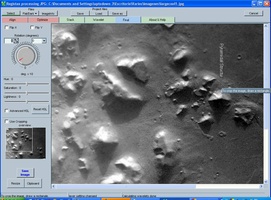- Program Like Registax App
- Program Like Registax For Mac
- Programs Like Registax
- Program Like Registax Bill
Registax Tutorial
Aqion is a hydrochemistry software tool. It bridges the gap between scientific software (such like PhreeqC) and the calculation/handling of 'simple' water-related tasks in daily routine practice. Latest version of aqion is version 6.3 and it was released on May 2017. Tags: Computational Chemistry Software, Science Education Software. Hacked website - posted in DSLR, Mirrorless & General-Purpose Digital Camera DSO Imaging: aorion314 here, a close friend and beginning astrophotographer, attempted to down load. Compared to PixInsight (PI), the software benchmark for the category, APP is cheaper and way easier to use, which makes it one of the best PI alternatives. If you decide to buy it, you can choose between the renter’s license for $60/yr, to always get the latest version of APP, or the owner’s license for $150, but you will have to purchase. Registax 6 software for planetary image processing. Adobe Photoshop 2020. Adobe Photoshop is a very powerful and flexible program for processing all types of photographic images. The power in Photoshop lies in its ability to stretch your pixel data further.
Here's my attempt to document the steps I normally use to process planetaryimages in Registax. This is not intended to cover all the features ofRegistax, but it should be a good starting point to help get you underway withprocessing your .avi files in Registax. The numbered steps are intended tomatch up with the numbered red circles in each screenshot.
1) Hit the Select Input buttonand open the .avi video or set of FITs files you wish to process.
2) Make sure the Colour processingbox is checked and I like to also check the LRGB option but it's not required.
3) Select an alignment box that willfit around the planet, center the box over the planet and then click themouse. The program will automatically switch over to the Aligningtab. Alternatively, some imagers like to use a smaller box and center itaround a feature like the southern polar cap. When processing images ofthe moon I usually use a small alignment box and a feature like a crater toperform the alignment.

4) I like to uncheck the Auto-Optimisationbox so that I can manually tweak the settings before optimizing the alignment.
5) Hit the Align button andthe initial alignment will be performed.
6) Now I like to tweak the settingsfor optimization. The Lower quality setting determines the cutofffor where Registax will stop optimizing frames. This feature is mainly tosave time since you don't want to optimize frames you plan to throw out anyway.
7) For this image I'm going toinitially decide to eliminate the lower 60% of the images so I look at the valueof the red quality curve for the point where 40% of the images fall under thecurve. This looks like about 73% so that's what I will set the LowerQuality setting to.
8) Hit the Optimize button andthe alignment will be refined for all images up to the point where you see theblue line become dashed.

9) Here you can see how the blue linebecomes dashed right near the 4th line marking 40% of the images since the Lowerquality setting was changed to 73%.
10) The progress dialog foroptimization is a little misleading since optimization will be complete at thepoint where the dashed blue line starts which will be 40% for this image.
11) Remember you can always hitthe Cancel button if you want to make an adjustment to the Lowerquality setting. Just hit the Optimize button again to restartthe processing.
12) After Optimizationcompletes, click on the Stacking tab to move on to the next step.
13) Now you can refine whichframes are stacked into the final image. Move the slider for the verticalred line and it will set a cutoff on the red quality curve. All framesthat fall to the right of this red line, which corresponds to all images with aquality rating lower than 75% (see bottom of window), will not be used.
14) Next you can move the sliderfor the horizontal blue line and it will set a cutoff for the blue differencecurve. All frames that fall above this blue line, which corresponds to allimages with a difference rating greater than 47% (see bottom of window), willnot be used.
15) You can look at the bottomto see how many frames are going to be included when stacked. There willbe 341 frames stacked for this image based on the settings I've chosen. This indicates that 341 frames fall below the blue line and to the left of thered line.
16) Hit the Stack buttonand the selected frames will be stacked.

17) After the stacking processcompletes the Wavelet processing tab will appear. Select this tabto move on to the next step. Below you can see the result of the stackedframes before any additional processing has been done.
18) Now I tweak the wavelet settingsto sharpen the image. I like to use the Linear mode with a step size of1. For most of my images I normally only make adjustments to layer 2 and3. For this image I only tweaked layer 2. The wavelet adjustmentsjust take a lot of experimenting. The tweaks will vary based on your imagescale and the quality of the image. Plus everyone has a different tastewhen it comes to sharpening. I try not to over sharpen my images since Iprefer a more natural smooth look.
19) This is a nice feature thatbecame available in version 2.0. Select the Set RGB shift checkboxto make adjustments to the color planes.
20) I've had good results justusing the Estimate button and letting Registax calculate the offsets.
21) The R+G+B mixer section isshown if you selected the LRGB checkbox earlier. This determines theweighting for creating a Luminance channel from your color data. Irecommend you experiment with these sliders to see what type of effects it canproduce. For Mars I find that the red areas are too bright if you have theR slider far to the right. You can lower that intensity by pulling the Rslider to left as you can see I did for this image.

22) Some other nice new featuresin Registax 2.0 are the ability to tweak the histogram and gamma settings ifdesired. The brightness and contrast can also be adjusted with the slidersat the bottom.
23) Select the Final tabto finish up.
24) Here you can rotate theimage if needed to achieve the desired angle. There are also boxes forflipping the image horizonatally or vertically.
Program Like Registax App
25) Adjust the Hue, Saturation,and Lightness to your taste. Using the advanced HLS feature you can reallytune these settings to target different wavelengths in the color spectrum. Personally I haven't used these features much.
Program Like Registax For Mac
26) Finally remember to saveyour work!
Programs Like Registax

For final tweaking I like to bringthe image into Photoshop 7 and run a Despeckle filter and then tweak the colorbalance and saturation. Here's my final version of this image:
Program Like Registax Bill
Good luck with your webcam images!